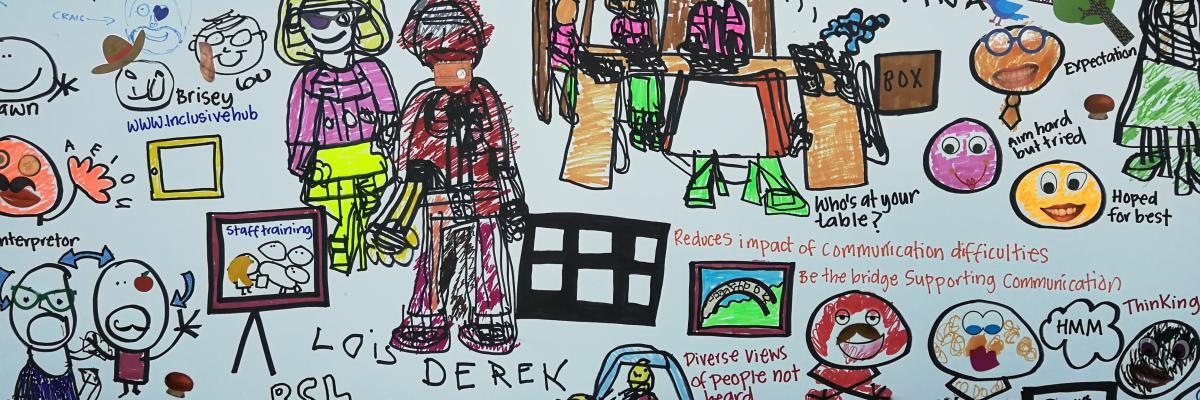Josie Vallely, Project Manager at Iriss, provides her reflections on two Fringe by Design events – the International Design in Government Conference and the associated Design with All event, led by the ALLIANCE.
I prepared for this week by reflecting on my own approach to the design process, which is routed in co-production methodology. I was interested to expand my understanding of how co-production processes and design thinking in general can achieve accessibility. I was also excited to learn about some new projects.
My first stop was at the International Design in Government conference, which explored among other things, the Scottish approach to service design. The conference was organised by the government digital service who established the International Design in Government community in 2017. This is a community of international designers working in, for and with governments across the world.
Discussion centred around the Scottish approach to service design. The vision of this approach is that the people of Scotland are supported and empowered to actively participate in the definition, design and delivery of their public services. This includes policy making right through to live service improvement - designing with and not for. Crucially, it means enabling people using and delivering services to be part of the design team, which ties in with co-production principles.
A key message was that while we don't have all the answers, we need founding principles to ensure that we can build on what we have.
Here are the seven principles of the Scottish approach to service design.
- We explore and define the problem before we design the solution
- We design service journeys around people and not around how the public sector is organised
- We seek citizen participation in our projects from day one
- We use inclusive and accessible research and design methods so citizens can participate fully and meaningfully
- We use the core set of tools and methods of the Scottish Approach to service design
- We share and reuse user research insights, service patterns, and components wherever possible
- We contribute to continually building the Scottish approach to service design methods, tools, and community
While the conversations around values and methodologies resonate with our approach at Iriss, I was pleased to spend the following day at an event with people who had direct experience of implementing these principles. Design With All was an event hosted by the ALLIANCE and delivered in partnership with Deaf Scotland, LGBT Health and Wellbeing, Sense Scotland, Talking Mats and others as part of the series of events, Fringe by Design.
The conversations at this event put the meat on the bones of what inclusion really looks like. Crucially, the conversation was led by people directly affected by inclusive or exclusive design practices. It focused on supporting the third sector in particular. The thinking behind this was that the third sector engages with very diverse communities, often with very specific needs around communication and participation. Therefore, its services have to be developed with people, for people. So, we all think about making our services accessible, but what about the design process itself? Are we meaningfully involving people in our workshops, consultations and events? Are our tools, methods and communications inclusive, accessible and welcoming to everyone? And finally, is this happening consistently across sectors and boundaries?
Zarina Ahmad of CEMVO Scotland emphasised why it’s essential to include diverse voices within service design in terms of race. This led to interesting conversations around diversity within diversity - acknowledging intersectionality across different groups of people. This helped us reflect on the flexibility that is required to create inclusive practices. We need to work together to challenge ourselves to move beyond comfort zones and challenge preconceived ideas about why engagement of certain groups is low.
For me, the takeaway message that came out of the two days was that we are all committed to supporting one another to learn – there is no one answer to inclusive design, and that by listening to the experiences of people on the frontline, design methodology can be used to make change happen.
You can learn more about the work I have been doing on the Making Co-production Happen blog. Contact: Josie Vallely.

